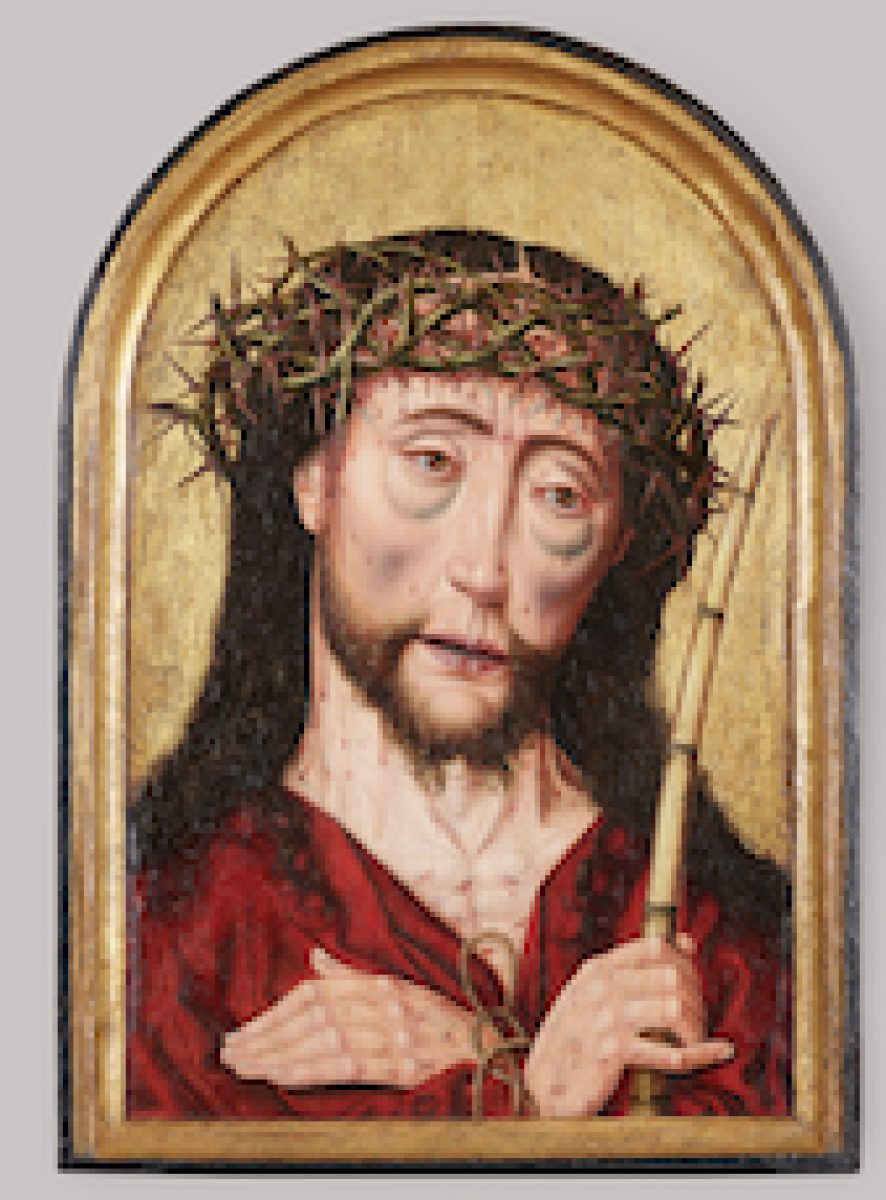New Flemish Primitive work for Musea Brugge: ‘Man of Sorrows’ by Albrecht Bouts

With the late-medieval painting 'Man of Sorrows' (1500-1525) by Albrecht Bouts, Musea Brugge welcomes a new masterpiece to its world-famous collection of Flemish Primitive art. The work was bequeathed by Father Ghislain De Jaeger to the King Boudewijn Foundation, which has entrusted it to the permanent keeping of Musea Brugge. This new acquisition will be immediately put on public display as part of the exhibition 'Face to Face with Death'
“In the run-up to the exhibition 'Face to Face with Death', the painting has been restored by Laetitia Golenvaux and Véronique Geniets. From 28 October onwards, the public will be able to admire it in all its glory in the St John’s Hospital," says Nico Blontrock, alderman for culture.
An important acquisition
The last private owner of 'Man of Sorrows' by Albrecht Bouts (ca. 1452 – 1549) was Father Ghislain De Jaeger, who had inherited it from his father, Dr. De Jaeger. Dr. De Jaeger was an eye specialist attached to the Sint-Janshospitaal and for many years was chairman of the Friends of Musea Brugge. Father Ghislain De Jaeger died in 2021 and bequeathed the work in memory of his late father to the King Boudewijn Foundation, on the understanding that it would be given a permanent place in the Groeningemuseum. This will be its new and final home after the exhibition.
Anne van Oosterwijk, Director of Collections at Musea Brugge: "Until now, our collection of Flemish Primitive paintings lacked a representative example of work by important artists who were active outside of Bruges during the 15th and 16th centuries. With 'Man of Sorrows' by the Leuven-based painter Albrecht Bouts, this lacuna has been filled. Interestingly, Albrecht Bouts was probably a pupil of Hugo van der Goes, whose 'Death of the Virgin' is one of the finest works in the Groeningemuseum. Last but not least, Bouts' devotional painting also reflects a less typical and more restrained side of the art of the Flemish Primitives. We are therefore delighted to receive this remarkable and important new acquisition."
The suffering of Christ
The Ecce homo paintings depicting the suffering of Christ by Albrecht Bouts and his workshop is the most important collection of works of their kind that has come down to us from the Southern Netherlands of the 15th and 16th centuries. The surviving examples, including this painting, demonstrate that the workshop was specialised in the serial production of these devotional scenes.
The painting depicts Christ wearing his crown of thorns against a golden background. His wrists are bound and in his right hand he holds a reed, symbolising the humiliation to which he is being subjected. The red robe represents the ordeal of his Passion that must follow. With his head slightly bowed, his mouth hanging open and his eyes full of sadness, Christ bears his painful trial with dignity.
The painting measures 48 x 33.2 cm in its original frame. The top is rounded, which was the usual format for private devotional works. Under the influence of Modern Devotion, a movement for religious reform founded during the 14th century, the theme of the 'Man of Sorrows' became extremely popular. "For the adherents of Modern Devotion, empathising with the life and above all the suffering of Christ was hugely important," comments Van Oosterwijk. It was precisely because the faithful could identify with the image of the suffering Christ that paintings of this kind became so highly favoured for private devotion. For this reason, the Bouts' painting fully deserves its place in the exhibition 'Face to Face with Death', where the theme of the experiencing of faith and meaning plays a central role.
Preserving our heritage
The King Baudouin Foundation has been working for more than 30 years to safeguard and protect our heritage. The Foundation’s Heritage Fund acquires works of art and historic documents that it promotes and makes accessible to everyone. Its collection is spread throughout more than 60 public institutions across the country. Over the years, and thanks to the support of numerous benefactors, the Fund has been able to create a rich collection. The KBF's collection currently comprises more than 27,000 works and 26 archives.